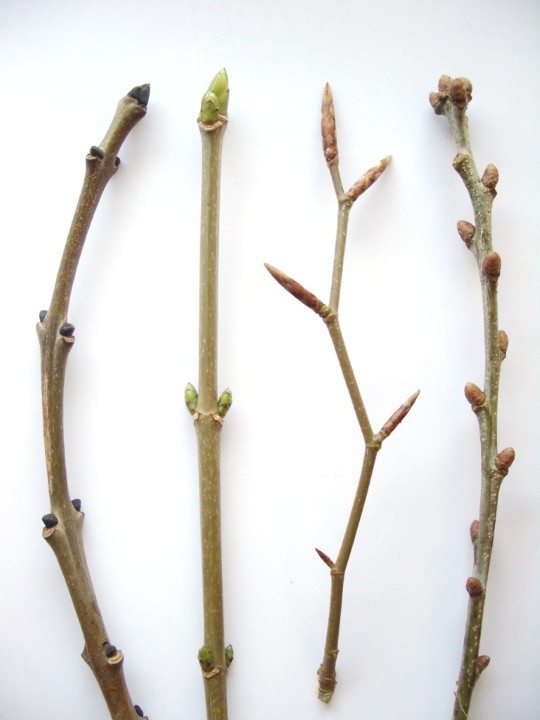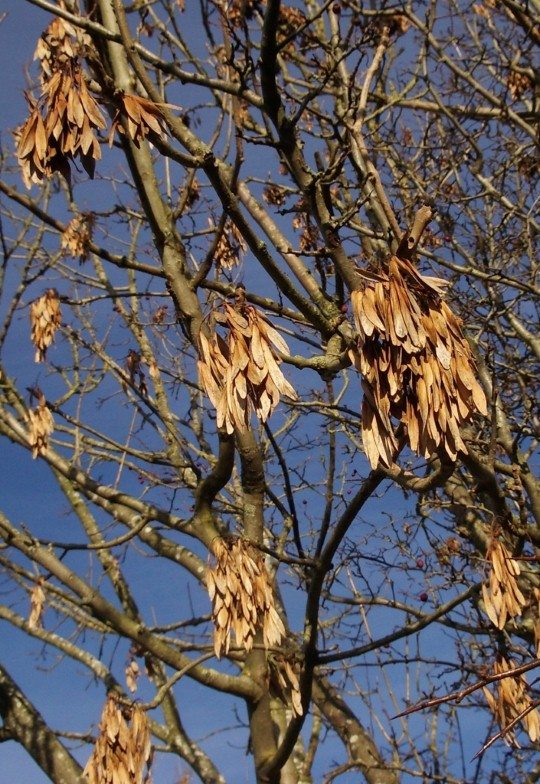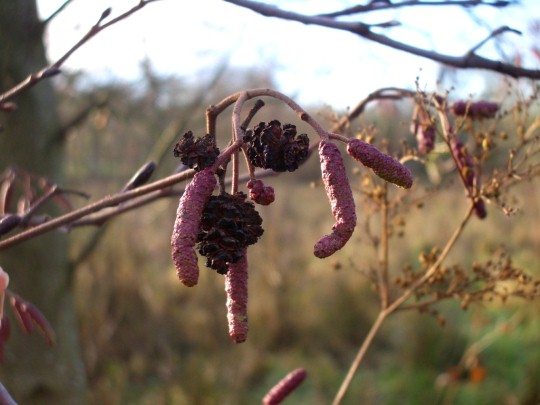Whilst Oak and Beech might cling on to a few dead leaves through the winter most of our trees are bare silhouettes until spring.
We are challenging you to identify ten types of woodland tree this winter using clues such as the buds, bark and fruits – and no, evergreen trees do not count! Below are a few tips to get you started.
1. Buds
Winter twigs may look sparse from a distance but on closer inspection you will find numerous buds waiting to grow into next year’s leaves. How are the buds spaced out? They can be ‘opposite’ (either side of the twig in the same place) or ‘alternate’ (alternating left and right down the twig). If the buds are opposite you are in luck as this narrows it down to a handful of trees! Likely suspects include Sycamore (big green buds), Ash (black buds) and Horse Chestnut (sticky brown buds).

2. Bark
Birch is an easy tree to spot from a distance with its white bark contrasting the winter landscape. Other trees may not be so obvious but many have unique patterns, old Sweet Chestnut for example can be recognised by its deeply grooved bark spiralling around the trunk. Is the bark smooth, deeply ridged, coloured or patterned?
3. Fruits and nuts
Trees have different ways of spreading their seeds, often by enclosing them in a fruit or nut. Although many trees shed their fruit in the autumn some species hold onto them into the winter. Look out for the red berries on Hawthorn and Rowan or bunches of dangling ‘keys’ on Ash. Alder trees can also be spotted in the winter with their distinctive miniature cones.

4. Flowers
Yes, trees have flowers too! Perhaps this is most obvious on the Hazel with its yellow catkins in January. Some other trees have winter catkins too although they tend to be smaller and maybe different colours.
5. Shape
Sometimes the tree’s silhouette will provide a clue. Maybe the branches are all ‘ascending’ upwards or the twigs are ‘weeping’ towards the ground. Oak has heavy limb like branches that regularly twist and change direction, sometimes at right angles. Hazel often has many stems sprouting from the ground resulting in a bushy shape whilst Lime tends to grow into a tall column-like tree.

I hope these tips will help you on your search. Some other things to consider are: location (some trees like to grow near water such as Alder and White Willow); and thorns – not many of our trees have these… Wishing you good luck with the Winter Tree Challenge!
I am Andy Perry – Biodiversity Trainee, Chester Zoo and I Act for Wildlife!